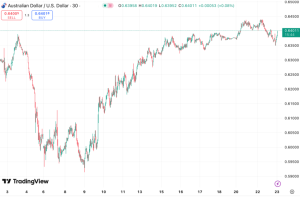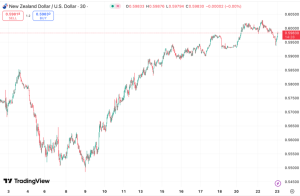- Trading
- Trading
- Markets
- Markets
- Products
- Forex
- Commodities
- Metals
- Indices
- Shares
- Cryptocurrencies
- Treasuries
- ETFs
- Accounts
- Accounts
- Compare our accounts
- Our spreads
- Funding & withdrawals
- Open account
- Try free demo
- Platforms & tools
- Platforms & tools
- Platforms
- Platforms
- Platforms overview
- TradingView
- MetaTrader 4
- MetaTrader 5
- Mobile trading platforms
- Premium trading tools
- Premium trading tools
- Tools overview
- VPS
- Genesis
- Education
- Education
- Resources
- Resources
- News & analysis
- Education hub
- Economic calendar
- Earnings announcements
- Help & support
- Help & support
- About
- About
- About GO Markets.
- Our awards
- Sponsorships
- Client support
- Client support
- Contact us
- FAQs
- Quick support
- Holiday trading hours
- Maintenance schedule
- Fraud and scam awareness
- Legal documents
- Trading
- Trading
- Markets
- Markets
- Products
- Forex
- Commodities
- Metals
- Indices
- Shares
- Cryptocurrencies
- Treasuries
- ETFs
- Accounts
- Accounts
- Compare our accounts
- Our spreads
- Funding & withdrawals
- Open account
- Try free demo
- Platforms & tools
- Platforms & tools
- Platforms
- Platforms
- Platforms overview
- TradingView
- MetaTrader 4
- MetaTrader 5
- Mobile trading platforms
- Premium trading tools
- Premium trading tools
- Tools overview
- VPS
- Genesis
- Education
- Education
- Resources
- Resources
- News & analysis
- Education hub
- Economic calendar
- Earnings announcements
- Help & support
- Help & support
- About
- About
- About GO Markets.
- Our awards
- Sponsorships
- Client support
- Client support
- Contact us
- FAQs
- Quick support
- Holiday trading hours
- Maintenance schedule
- Fraud and scam awareness
- Legal documents
- Home
- News & Analysis
- Articles
- Geopolitical Events
- Can we see the forest from the trees? Where does Australia sit?
- Home
- News & Analysis
- Articles
- Geopolitical Events
- Can we see the forest from the trees? Where does Australia sit?
 News & AnalysisNews & Analysis
News & AnalysisNews & AnalysisIt has been over 21 days since ‘Liberation Day’ – since then, the forest of chaos ensued as lead investors, traders, and the full gamut of financial participants lost sight of where we stand.
Not surprising when you look at the reporting versus the market. The chaos has led to mass loss of confidence from both the consumer and business side, spending intentions have plummeted and ‘American Exceptionalism’ is ‘ending’ depending on your point of view – this is what’s being reported.
The market, however, has had other ideas – since Liberation Day, most have gone a full 360-degree round trip and more
AUD/USD

NZD/USD

Equities, too, have done some staggering reversals of fortune. Outside of China and the US markets, most major indices are either at or near breakeven. We are talking about the likes of Canada, the UK, Australia, most of Europe, Japan, South Korea, Australia, New Zealand and take Mexico, one of the hardest hit nations in the new tariff order – it’s up 6.4% since Liberation Day.
So, can we see the forest from the trees? Or should that be the trees from the forest?
We need to drill down to one player, and for that, we want to concentrate on Australia, as the chaos from Washington has clearly consumed everything and led to a loss of reality.
So, where does Australia sit? Well, it entered 2025 with solid economic momentum. Fourth-quarter GDP figures surprised to the upside, inflation appeared to be bending back toward the RBA’s target band, and consumer sentiment was on the mend until Liberation Day. Domestically, the data painted a picture of a soft landing: one where inflation was moderating without significantly damaging the labour market or derailing growth. Happy days if you are running the RBA.
And despite Liberation Day’s disruptions, Australia’s fundamentals overall remain largely intact.
Capacity utilisation has begun to ease, labour markets are still tight, though the participation rate has slipped, and headline inflation pressures have eased thanks to falling import costs and policy-driven subsidies (which is not a good thing but has helped). Core inflation, too, is easing thanks to lower inputs from the likes of rents, household and personal services and financial services, but as yet has not cracked the RBA’s target band.
Overall, the economy continues to expand, although modestly and forecasts for 2025 and 2026 have been downgraded as the outlook is becoming more finely balanced.
One thing to keep in mind, too, is that Australia may even benefit from some aspects of the shifting global trade environment, particularly if supply chains are redirected away from the U.S., leading to cheaper goods and a further softening of import-driven inflation that Australia is heavily exposed to.
A Deliberate Easing Cycle
We background all this to give colour to an interesting trade development that has been lost in the chaos. RBA rate pricing.
First things first – the consensus for the RBA cash rate is that by Christmas this year, the cash rate will fall to 3.1% – previous consensus was 3.6% – that’s a full 100 basis points (bps) out of the cash rate from this point in time.
What significantly differs is the timing and size of cuts to reach the 3.1%.
The RBA has already taken the first step with a February cut, which it framed “not as the beginning of a cycle but rather as a reversal of its precautionary hike in November 2023”.
So, February was just a ‘righting’ of the ship. Where now? With inflation continuing to moderate and global uncertainty mounting, the case for additional easing is building—albeit cautiously.
Inflation data supports this slower, data-dependent approach and having now seen and heard Michele Bullock in action for over 18 months, this is likely to be the most probable course of action.
Real-time estimates for the first quarter trimmed-mean CPI due on the 30th of April sit at 0.6%, quarter-on-quarter and 2.8% for the year-on-year figure, which would mark the first time core inflation has been in the RBA’s target band since 2021.
Housing inflation has continued to decelerate—likely a sustained trend through 2025—and extended electricity bill subsidies are expected to further soften headline numbers. At the current trajectory, consensus has inflation ending 2026 around 2.6%, firmly within the RBA’s target range. All positive news for an RBA cutting cycle.
However, this is where the divergence is building – the inflation story is leading to a large front-loading of rate cuts. We know the RBA is prepared to act, but it remains wary of providing strong forward guidance. The minutes from the April meeting reaffirmed the Board’s concern over sticky unit labour costs—an issue exacerbated by weak productivity. Subsequent public remarks from the Governor and Deputy Governor stressed a cautious, reactive stance, as well as keeping some powder dry if the uncertainty leads to even larger issues. But a 50bps cut at the 20 May meeting looks to be an upside move.
This will be interesting for the likes of the AUD, although it has rallied hard against the USD, like all other major currencies have. Against the likes of the EUR and GBP, it has clearly been priced on global risk, yes, but also the prospect of a large cut on 20 May.
We caution this view. Why? The upcoming May 3 election has added another layer of complexity. Both major political parties have pledged significant increases in public spending across sectors such as healthcare, housing, aged care, and defence. The most recent pre-election Budget included modest tax cuts and extensions to electricity subsidies. The opposition has flagged further tax relief, including a potential cut to fuel excise as well as major support for home ownership through subsidies.
These promises imply wider deficits and a rising debt load regardless of who forms the government. With no meaningful supply-side reforms on the table, Australia’s fiscal trajectory is skewing looser.
That ‘assistance’ is likely to stay the hand of the RBA from a shock cut for a more restrained 25bps cut. This is in keeping with the ‘narrow path’ it still uses for justification, balancing the need to support domestic sentiment and inflation targeting with caution around external volatility and fiscal expansion.
Thus, we believe a more measured path is likely – this being 4 25bps cut meetings. Most likely being May, August, September and November. This is likely to see the AUD jumping from time to time due to overly bearish rate-cutting viewpoints.
The forest is there – we just need to look in the right places and ignore the blowing breeze through the trees.
Ready to start trading?
Disclaimer: Articles are from GO Markets analysts and contributors and are based on their independent analysis or personal experiences. Views, opinions or trading styles expressed are their own, and should not be taken as either representative of or shared by GO Markets. Advice, if any, is of a ‘general’ nature and not based on your personal objectives, financial situation or needs. Consider how appropriate the advice, if any, is to your objectives, financial situation and needs, before acting on the advice.
Previous Article
How High Can Gold Go? – What Traders Should Watch Next.
Why Is Gold in Focus Right Now? Throughout early 2025, gold has surged to record highs, breaching $3,400 an ounce for the first time in history. Fo...
April 22, 2025Read More >Please share your location to continue.
Check our help guide for more info.

